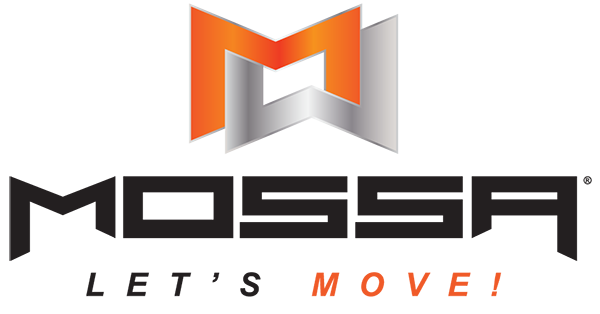Snacks rank high on my list of daily priorities. Sometimes I know I won’t have time for a sit-down mid-day meal. Or maybe I’m ping ponging from place to place. Whatever the case, without snacks throughout the day, without the fuel I need – an apple, some almonds, a granola bar (or two) – I’ll get hangry. Cranky. Fatigued. So, I always keep something quickly accessible.
Workouts Alone Don’t Work
Now, let’s talk about the other fuel our bodies need: movement. So many of us spend 8, 10, even 12 hours in sedentary positions…and that’s just during our waking hours! Our bodies need movement, and what I’ve learned over a decade or two in the workout business is that workouts alone…don’t work. We need movement in big and small portions, like movement meals and movement snacks.
Don’t get me wrong. If you’re getting, say, 30 minutes of movement most days a week, you’re doing better than about 80% of the U.S. adult population. Keep doing it! But what about the 23.5 other hours each day, when you’re likely bound to a desk, a car, or a device?
If you only ate one small meal per day, you’d be perpetually low on fuel. Flat. Famished. And maybe “a little less friendly,” to put it politely. (Just me?) The same is true with movement; when you only have one serving per day, you perpetuate poor postures, put muscles to sleep, become stiff and achy, and miss out on the simple pleasures of a refreshed mind and body. You’re missing the nutrition of a movement snack and your body is at risk of being stiff and angry, or – can I make up a word? – stangry.
“Work-Ins” Are Easy to Digest
Incorporating a little movement into your day – packing in a movement snack – doesn’t have to be complicated or inconvenient. No drive, no shower, no change of clothes needed. A brief movement opportunity – we call it a “work-in” – can be a digestible 4 minutes at or near your desk, to reverse the sedentary stresses caused by sitting. It can be 5 minutes in your home, stretching to wake up the low back and hips that sleep when you’re seated. It can be a 6-minute walk after a long meeting. It can even be 10 minutes of energizing – or relaxing – mind and body work.
Recovery Is for Everyone
Work-ins, a term introduced to us by our friends at the Institute of Motion, are in a category of movement that goes to the bottom of too many priority lists: recovery. One common misconception is that recovery is reserved for elite athletes, or people coming off injuries, but recovery is essential for everyone, or at least everyone who sits too much, types, texts, drives too much, endures repetitive movements at work or play, and…sure, exercises a lot!
Another common misconception about recovery: it’s rest. No, when we talk about recovery, we mean active recovery. Intentional movement, not just lounging on the couch or taking a day off. Work-ins are measures we take to undo the physical stresses we’ve put on our bodies, whether through sport and workouts or through our day-to-day habits, lousy postures, chores, hobbies…even the collision of chores and hobbies, like yardwork!
What Can Work-Ins Do for Me?
In the short-term, a movement snack is exactly like its food counterpart: it provides fuel, energy, and – in my case – a little enjoyment. It breaks up the day, addresses a need, and gets you through to your next “meal.”
What is Movement Health?
But the long-term benefits of balancing workouts with work-ins can be summed up in two words: Movement Health. Movement Health is our ability to move well – with ease, confidence, competence and without restriction or injury. It’s the collection of abilities we need in real life – balance, strength, mobility, flexibility, agility – to stay spry and to increase our active life expectancy.
Movement Health is maintaining fundamental movements as we age – to never “age out” of walking, squatting, lunging, bending, rotating, and getting up and down off the ground. It’s also a giant umbrella that protects us from the storm of sedentary stresses, including back pain, stiff joints, physical limitations…a ”no-can-do” body. And Movement Health is also what makes us better athletes, sharpening our competitive edge for sports, but more commonly, keeping us physically and mentally fit for real life’s adventures.
Who Could Go for a Snack?
Check your posture right now, as you read this. Are you seated? Rounded-shouldered? Looking down? Flexed elbows and knees? How long have you been there, an hour? 2? 4? Hey, no judgement – I’m also too often seated, even in my role in the fitness business. Sure, I taught Group Power this morning, but my day job as a writer has me seated, hunched, scrunched, locked, and loaded with bad habits.
But our bodies were made to move – not in one block per day, but throughout our days. So, let’s talk specifics. What can we do right now?
Too Much Sitting? De-Desk® Your Body.
I’ll spend 5 minutes doing some desk-based exercises, a program called De-Desk® Your Body. We created the series as a work-in for anyone who has a sedentary job. They’re six bite-sized, guided movement opportunities to get us unlocked from our desks, and we recommend de-desking for 5 or so minutes for every 2 hours of sitting.
Tomorrow, when I’m near my ViPR (a fantastic tool, by the way), I’ll take 10 minutes for Move & Mobilize, a work-in we created to target specific, common needs, like spine health.
And, since I know I’m going hiking this weekend, later this week I’ll try the TLC Lower Body Focus session that brings attention to the feet. Because, yes, we need to recover head to (actual) toes!
What will you do? Maybe you have a percussion therapy device, a wonderful way to passively give attention to your muscles and connective tissues, whether pre-workout, post-workout, or to tackle trouble spots. Or grab a mat and do 10 minutes of Centergy, our mind-body program that is both a workout and a work-in! Or stay at your desk to try a 4-minute De-Desk session.
In a matter of minutes per day, even with no equipment, everyone can benefit from a movement snack. And when we balance our workouts with work-ins, we extend our active life expectancies with better results, fewer injuries, and ready-to-move bodies. And don’t worry, movement snacks will never spoil a meal…in fact, they’ll only make it better! Now…who’s hungry?
…
MOSSA’s mission is to inspire people to move. We create and deliver innovative and inclusive workouts for health clubs and YMCAs worldwide and for the home user through MOSSA On Demand.
As a small thank you for visiting our blog, use the coupon code MOVEMENTSNACK for an additional 30 days to get started and get moving with MOSSA On Demand.



 More than Muscles: Benefits of Strength Training
More than Muscles: Benefits of Strength Training New Member Onboarding: Over-Welcoming or Overwhelming?
New Member Onboarding: Over-Welcoming or Overwhelming? Team vs. Technology and the Future of Fitness
Team vs. Technology and the Future of Fitness Setting Goals for Group Fitness
Setting Goals for Group Fitness Does Exercise Have to be Boring and Bitter?
Does Exercise Have to be Boring and Bitter?